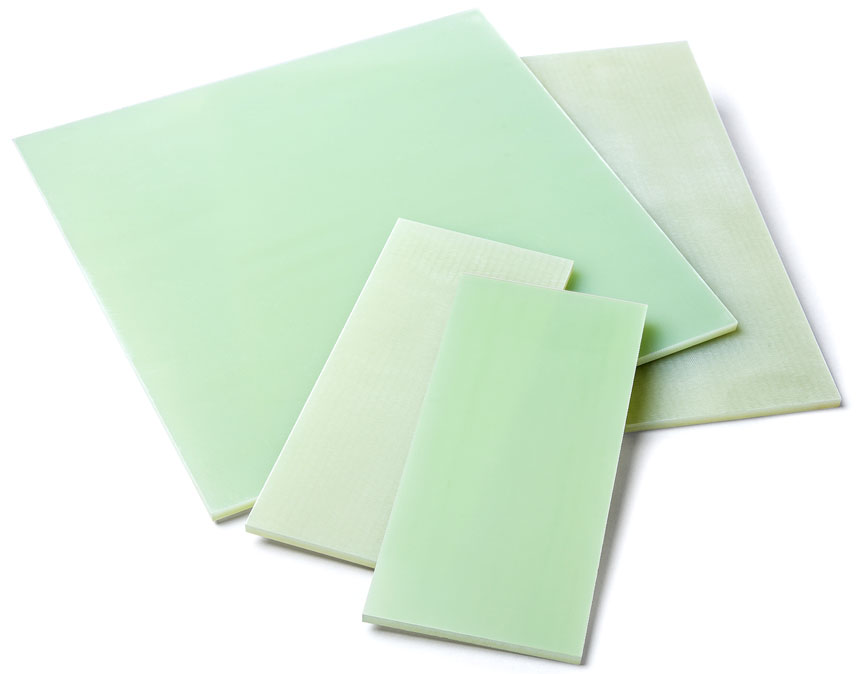What is G-10?
G-10 material is a thermosetting industrial laminated plastic consisting of a woven glass cloth material and an epoxy resin matrix. It’s used for applications that require electrical insulation and high mechanical strength while operating in a room temperature environment. There are variants of the G-10 material that can operate in extreme weather conditions, but these are simply that, variants. It is a material that is typically used alongside electrical equipment due to its insulating properties. However, it is also a widely used material in the knife industry and even has a hand in a number of industries; ranging from guns to gears, washers, and electro-mechanical machinery.
Why is G-10 a Common Material for Knife Handles?
G-10 is commonly used in knife handles due to its strength and durability even under tough conditions, and its ability to be machined into many forms and textures to accommodate any situation. G-10 is waterproof, making it ideal to be used in wet environments. Though it wasn’t originally intended for knife handles, G-10 has proven to be quite effective in the industry and has become a mainstay over the last few years for knife owners and creators alike.
Is G-10 a Better Material Than Phenolic varieties (Micarta)?
The question of G-10 being better than phenolic (Micarta) is an easy one to answer. G-10 is, in essence a version of phenolic (Micarta) that is more durable. G-10 follows the same creation process as phenolic (Micarta) except G-10 is made with fiber glass and epoxy resin while phenolic varieties (Micarta) use cotton cloth, Kraft paper, or other natural fibers as its main substrate. An advantage to phenolic (Micarta) that may give it an edge over G-10 is that you can use a wide variety of fabrics to make it. Essentially anything from denim to paper can be used to create phenolic (Micarta), while G-10s signature material provides it with its additional strength and temperature resistance.
How Long Does G-10 Last?
As mentioned above, G-10 is a highly durable and strong material that is built to last, even under unfavorable conditions due to the fiberglass, or epoxy in its formula. Unlike traditional metal and other materials, the epoxy in the G-10 doesn’t rust, become brittle, or soften with the passage of time. Each time you pick it up will feel good as new. Another perk of making use of such a strong material is that it is exceptionally low maintenance when compared to other materials as well, due to its long-lasting properties. The only weakness G-10 seems to possess is exposure to sunlight for long periods of time will eventually discolor it and become brittle. However, even if G-10 is left outside it will still last for an extreme length of time, up to multiple years, before it degrades to a point where it will need to be replaced or discarded. Overall, G-10 will last you a significant amount of time regardless of the conditions it faces.
How Customizable is G-10?
One of the best perks that G-10 brings to the table is its highly customizable nature. G-10 is able to be machined to meet your preferences and comes in a wide variety of colors and styles that can suit anyone who is seeking to use it. The handle of a knife, a handle for tools, or the grip of a gun is a great place for some unique customization. Whether that be a textured grip for better handling, or an interesting pattern or color scheme that allows it to blend into its environment or stand out depending on what you’re using it for, G-10 be widely customized, aesthetically speaking. G-10 handles can be sanded, textured, or polished allowing for even more unique designs. All in all, G-10 can be customized to suit designer, engineer, or user preferences, regardless of the design or specific application.
Start Your Custom G-10 Order Today!
We at Current Composites are ready to take your order for G-10 materials. Whether you intend to use it for any type of handles, grips, or many of its other applications, we can assure you that we will supply exactly what you need for any given job. To start an order on our website, you can go to our contact page and fill out a form. If you do choose to go this route, after we receive the order, we will work with you to get you exactly what you need. We can also receive your order by phone if you prefer, and we would follow the same process as the online form, just over the phone instead of via email. Our company seeks to get every order right every time, and we will work with you to ensure that this is the case for your experience as well. No one does G-10 custom orders like Current Composites. Get in contact with us today, and we’ll work to get your order processed to your satisfaction right away!









